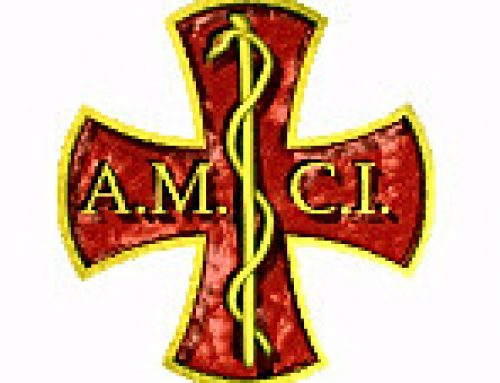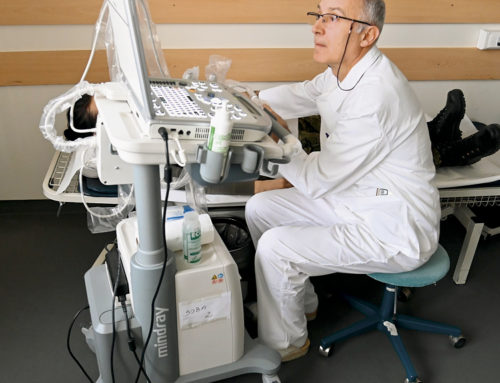12 September 1983
To representatives of the world of science and art in Austria
The Hofburg Convention Centre in Vienna was the site of a meeting on Monday, 12 September, of the Holy Father with representatives of the world of science and art and members of the mass media. Professor Gernot Eder, President of the Association of Catholic Academicians, introduced the meeting by thanking Pope John Paul for his presence, which in itself already represented for them a positive response to the questions and expectations of men of culture, who see rationality, creativity and the open language of communication threatened.
Present at the meeting were also Cardinals Glemp, Macharski and O’Fiaich, the Minister for Science and Research, and the Minister for Education and Art.
Pope John Paul II addressed the group as follows:
Ladies and Gentlemen,
1. Greetings to all of you. Let me express my appreciation for the invitation to this meeting with you – research workers and teachers at Austrian universities and academies, artists representing the various disciplines of the fine arts, of music, literature and the cinema, and representatives of the press, radio and television. Greetings also to all those who in the Church of Austria work for a creative encounter with the sciences, arts and media, and first and foremost to you, Cardinal Konig.
2.If this gathering had not taken place my visit to Austria would indeed have lacked an important dimension. The conflict-ridden but fruitful encounter of several different civilizations in this country has, over the centuries, made a great and authentic contribution to science and the arts. Today you, ladies and gentlemen, are adding to this rich heritage with the contributions you make for today and tomorrow. The history of science and the arts in Austria, as in all of Europe, is in many ways linked with the history of faith and the Church. At times, these relations were strained by conflicts which sometimes even threatened to cause a permanent rift. Whatever conflicts have existed, however, should not make us forget the great achievements resulting from our common effort, nor should they prevent a fresh start in the dialogue between science, the arts and the Church for the benefit of man.
3. Even though our positions may differ, we do meet in our common interest in the place of man in the world, in our concern for him, our hope for him. We share this concern at an hour in the history of man when the future of mankind is in grave danger. In such times all creative and thoughtful men of good will are under the obligation to combine forces more than ever before, so that the progress of man, the progress of mankind, may not be blocked or terminated by disaster.
4.Three years ago, at the headquarters of UNESCO in Paris, I addressed these words to the Assembly of representatives of all civilizations of the Family of Man. “Behold the man!”, and I added, “We have to love man for man’s sake”.
Here in Vienna, as I stand before you, I should like to repeat these words. For man is the all-encompassing subject of all science and all arts, and it is the prime objective of the media to strengthen the bonds between human beings. Man as an individual, as a fellow human being and as a child of God, is also the concern of the Church, so much so that I felt entitled to say in my Encyclical Redemptor Hominis: “Man is the foremost way that the Church must pursue in being true to its calling; the way that Christ himself has gone before us and which inevitably leads through the mystery of the Incarnation and Redemption” (no. 14).
The Church professes boldly its faith that man is made in the image of God, and that he has his eternal future in God.
5. It is against this background that I should like to ask you to consider the ideas I modestly put before you.
The ultimate objective of all science is man; science, in the last analysis, deals with man and serves man. In certain respects the same can be said of theology, which deals with man in such a way that it transcends him and regards him from the vantage point of his Creator.
In all its disciplines science has undergone a high degree of specialization. This was one of the prerequisites for all the discoveries and developments which make us stand in awe of the achievements of the human mind, and which make the faithful praise the Lord as the Creator of the creativity of this mind. Practical applications of the progress made in the sciences have in many respects improved the condition of man. Let me mention only the strides made in combating hunger and pain.
If science asserts that it pursues its activities in a value-free realm, such ascetic renunciation of wishful thinking may well have a cathartic effect on scientific analysis, unless its claim is absolutized to such an extent that the irrefutable validity of moral values is no longer recognized.
6. Like all human activities, also the activities of science, pure and applied, are characterized by an inescapable ambivalence. Man is threatened by what he himself produces. In the face of the Hiroshima disaster the physicist Robert Oppenheimer admitted, “Physicists have known sin”.
In view of the many threats to mankind that result from technological revolutions many people have become increasingly sceptical of, and sometimes hostile to, science and technology. Still, our problems cannot be solved by running away from science and its technological applications but only by their continued or even intensified utilization, though on a human scale. For it is not science and technology as such that threaten mankind but their disengagement from moral values.
7. In view of these developments it is imperative that man – God’s image – came into his own as master and end of science and technology, so that the products of his mind and his hands may not destroy him and the world in which he lives. For this to be achieved, scientists, technologists and politicians will have to ask themselves searching questions, questions that relate just as much to the human individual as to mankind as a whole: questions that have been set aside for a time in an effort to foster scientific progress. I am referring to questions of a philosophical and religious nature, questions relating to the meaning, limitations, priorities and control of scientific and technological action – which, of course, does not mean that what is commonly called fundamental research should be limited or subjected to external controls in its quest of truth. In the book of Genesis these questions appear as God’s eternal questions to man: “Adam, where are you?” and “Cain, where is Abel, your brother?” Our receptiveness for such questions also depends largely on the contribution of the humanities, to which I referred in my address before the Institute Catholique in Paris as the untapped resources of our age-though it must be admitted that they not only open up new horizons but also clearly reveal the limitations that beset them.
8. It is encouraging to know that the number of those scientists who have come to comfort themselves with such questions is steadily growing. Across the borders of countries and power blocs a scientific world community is taking shape which, on ethical grounds, is no longer prepared to accept that the fate of man is not threatened by genetic manipulation, biological experiments and the sophistication of chemical, bacteriological and nuclear weapons. Let me cite in evidence of this the example of those 58 scientists from all continents who, in September 1982, after a meeting of the papal Academy of Sciences, published a declaration on the necessity of preventing nuclear warfare (L’Osservatore Romano, English edition, no. 41, 11 October 1982. pp. 8 and 11).
9. Man and his world – our earth which the first space travellers saw as a planet resplendent in blue and green – have to be preserved and nurtured. This implies that life must be handled with care, also animal life and, indeed, all of animate and inanimate nature. In the light of faith, earth is not a boundlessly exploitable reservoir, but part of the mystery of creation, not to be recklessly raided, but worthy of our awe and amazement.
10.This amazement, however, not only points us the oft-forgotten road to nature as God’s creation but also the road to the arts as products of man’s creative force. Max Reinhardt, co-founder of the Salzburg Festival, once called the arts a “staff of life”, or in other words, a prerequisite for the full realization of the human potential. And the poet Rainer Maria Rilke, who hailed from your civilization, regarded art and music as sources of fascination, comfort and help. Art – the helper of man – what a beautiful and challenging definition. But it can respond to this challenge only if it commits itself to the cause of humanity. In turn, humanity in all its grandeur, with all its potentialities and susceptibilities, can be grasped only if we look at it from the perspective of eternity, from the perspective of God, who is the ultimate object of man’s longing and its only fulfilment. Both the individual and society need the arts to gain access to something that is more than just useful, to something that confronts man with his own self. They need literature and poetry, they need its gentle comfort as well as its prophetic anger, they need the emotion which often matures best in solitude and suffering. As Beethoven put it so profoundly: the artist, in a sense, responds to a priestly calling.
11. The Church, too, needs the arts. Not, first and foremost, in order to commission works of art and thus make art its handmaiden, but rather to get a deeper insight into the human condition, into the misery and splendour of human life. The Church needs the arts in order to understand better what lies deep inside man – that man to whom the Church is to preach its Gospel.
The Church needs the arts especially for its liturgy, which-all in all-is meant to be a work of art inspired by faith, drawing upon all the creative forces of architecture, sculpture and painting, music and poetry. In its eschatological dimension, liturgy strives to make man partake of the splendour and resonance of the Eternal Jerusalem, of which the Bible tells us in its last book in the language of art. This is where the beautiful and the good – so often painfully reft apart in the course of history – will be united forever.
Albert Einstein said that both true art and true science had their roots in mystery. Religion and the Church seek to penetrate into the depths of this mystery, and this is where they meet with the arts and the sciences.
It has sometimes been said that the arts are dying, or dead. In this respect, the arts, but also philosophy, suffer a fate similar to that of the Church. I am confident, however, that art in all its forms is inexhaustible of the human mind and of human imagination, “God created man in his own image” (Gen 1:27).
The gradual resumption of the dialogue between the arts and the Church may well be expected to give rise, in the long run, to works of art that speak to men – believers and seekers alike – in a new way, and to open their eyes, their ears and their hearts.
12. Let me now specifically turn to those of you who, as publicists, render a crucially important service to mankind. It is your task to act as mediators between the sources and the recipients of information via your instruments, the media. Let me thank you for your valuable help in communicating the message of the Church to so many people – also, and particularly, during these days of my visit.
In the name of the many who expect such service from you and in fact, depend on it, I ask you spare no effort to build bridges between human beings, no matter how wide the gulf, no matter how insurmountable the walls that separate them. Your country is especially well placed to do this. As you scrutinize man and society, do so not only with the piercing eye of the diagnostician, but in the light of hope and with a flair for any opportunities that might present themselves for a change for the better. Give good news a chance; make it at least as thrilling as bad news. And search for whatever good may be hidden behind tragedy.
13. “Behold the man!” Let me summarize in these words what I have to lay before you.
Distinguished representatives of the arts, of science and the media: Let me beseech you never to lose sight of man as he hopes, loves, fears, suffers, sheds his blood. Be his advocates, be the guardians of his world – this beautiful, this endangered world.
In this endeavour you are on common ground with the Church, which steadfastly regards the One of whom Pilate said: “Ecce homo” – ”Behold the man”.
Jesus Christ, Son of God and Son of Man, is the way to achieve humanity in its fullness. He is also our goal. May many receive the grace to find him again – aided by your endeavour.
John Paul II








